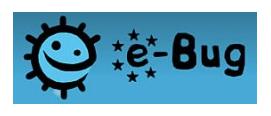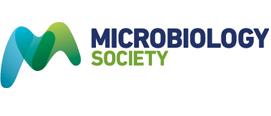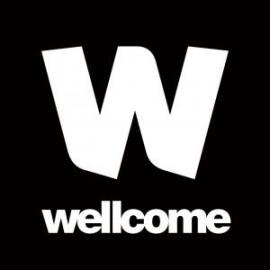Communicable diseases: immune system defence, treatment and prevention
GCSE Biology students need to understand the fundamental concept that communicable diseases are an interaction between a particular pathogen and the body's various defence mechanisms. They need to be able to explain how such diseases are spread and should be able to describe a common human infection. Students should also know about sexually transmited infections in humans including HIV/AIDS. For these diseases students should be able to explain how the spread of these may be reduced or prevented.
Students will need to be able to describe the non-specific defence mechanisms of the human body, in terms of what these mechanisms are and the fact that they do not distinguish between one type of pathogen and another. This will then lead onto students being able to describe the specific defence mechanisms in terms of the role of the immune system. In terms of treatments related to communicable diseases, students should be able to describe how monoclonal antibodies are produced and how they can be used. They should also be able to explain the use of vaccines.
In delivering this topic, students understanding of pathogens needs to be confirmed. Often students do not seem to appreciate that there are different types of pathogens, i.e bacteria and viruses. It is worth spending time on this area before moving onto non-specific and specific defence mechanisms. Using a range of illustrations/images and asking students to prepare annotated diagrams of different pathogens will support learning. A common misconception is how communicable diseases are spread, students do not always appreciate the different modes of transmission of different pathogens, so ensure they complete activities to support this understanding.
Students often display confusion between with use of antibiotics and the use of vaccines, a misconception being that vaccines are possible alternatives to the use of antibiotics. It would be worth developing some comparison activities for these two ways to treat/prevent communicable diseases. Students could be given website links-one on antibiotics and one on vaccines - then asked to note five key bullet points from what they have read.
Whilst this list provides a source of information and ideas for experimental work, it is important to note that recommendations can date very quickly. Do NOT follow suggestions which conflict with current advice from CLEAPSS, SSERC or recent safety guides. eLibrary users are responsible for ensuring that any activity, including practical work, which they carry out is consistent with current regulations related to Health and Safety and that they carry an appropriate risk assessment. Further information is provided in our Health and Safety guidance.
Secondary: Immune Defences *suitable for home teaching*
Produced by the Health Protection Agency, this e-bug resource contains teacher guidance, stimulus materials and student activity suggestions. It looks at the topic of disease prevention by the body’s own natural defences.
The detailed presentation and animation covers both non-specific and specific defence mechanisms. This would be really useful as an introduction to this topic area. Having watched the presentation students could be asked to summarise what the presentation was about, they could be given questions to answer or they could produce flow diagrams showing the series of events in phagocytosis and antibody production
Fighting Fit *suitable for home teaching*
This Catalyst article looks at how exercise affects our immunity and susceptibility to infection. Recent research indicates that a person's level of physical activity affects their immune function, influencing their risk of respiratory tract infections such as a cold. Whereas moderate levels of regular exercise seem to reduce our susceptibility to illness, long hard bouts of exercise and periods of intensified training appear to have the opposite effect, and put athletes at increased risk of colds and flu.
The article would be a good homework activity: following initial discussion in class about the benefits of exercise, students could read the article and consider what is the research in the article suggesting? is it valid? are there other factors to consider? the discussion could then be revisited at the start of the next lesson.
There are many ways to make effective use of Catalyst articles, a booklet has been produced which provides ideas on how Catalyst articles can be used with students and includes six exemplar activities. This booklet can be accessed at: https://www.stem.org.uk/elibrary/resource/27308>>
Cholera: Death by Diarrhoea *suitable for home teaching*
This resource, from the Society for General Microbiology, charts the history of Cholera and investigates the causes, diagnosis, treatment and prevention of the disease, as well as vaccine development and community education strategies.
This resource addresses the spread of pathogens in contaminated drinking water. The booklet is quite detailed and 12 pages in length, so it is advisable to select extracts appropriate for students’ abilities.
One approach is to first describe to students the work of Jon Snow and Robert Koch (see pages 2, 3 an 11 of the materials). Students could then read pages 6 and 7 of the publication. They can be asked to find the symptoms and modes of transmission. Then, in small groups, students can be asked to decide on a set of five rules that should be followed to try and prevent transmission of the disease. Groups can share their ideas with the class and then, as a whole group, compare their suggestions with those made on page 7.
The session can be concluded by looking at the work of a charity such as Water Aid. Short video clips and personal stories can be found at: http://www.wateraid.org/uk/what-we-do/our-impact
Infectious Diseases - Diseases
This is the first of four interactives about infectious disease. Working in groups of 4, students could work their way through this interactive, looking at the animations, answering the questions. They could then be asked to provide a summary of what they have learnt and present this to the rest of the class--this summary could take any form: PowerPoint presentation, poster, leaflet etc..
Alternatively specific tasks could be set in relation to each interactive, and each one could be set up on a specific computer(s) around the room and either in groups or individually students could work their way round each interactive.
For this interactive which looks at a number of different communicable diseases students could be asked at set of questions specifically about HIV/AIDS and compare this disease to the others which are described on the website
Infectious Diseases - Immunity
For this interactive, which looks at immune response and treatments, students could be asked at set of questions specifically about monoclonal antibodies (page 6). There is also a very detailed quiz activity at the end of this resource
Infectious Diseases - Medicines
For this interactive, which looks at medicines used in the treatment of infectious diseases students could be asked at set of questions specifically about antibiotic resistance
Infectious Diseases - Pathogens
For this interactive, which looks at different pathogens, students could be asked at set of questions specifically about different ways in which pathogens can be spread to cause disease (page 7)
HIV and AIDS
This detailed and very well presented booklet from the Society for General Microbiology, clarifies the difference between HIV and AIDS. The booklet describes the HIV virus, how it replicates and how it causes the disease. The stages of the infection are charted and transmission of HIV is explained, together with sections covering tests, treatments and work on developing an effective vaccine.
Whilst costs might prohibit printing this for individual students, it would be a useful class reference document. It may also be possible to use individual pages with groups of students or use the illustrations to show the class via a whiteboard
Immune system
This is an extensive resource package produced by the Welcome trust. The resource was originally aimed at 16-19 year olds , but there is some useful material for GCSE Biology. The resource looks at several aspects of the immune system including:
• The non-specific immune response
• Specific immune response and antigen recognition
• T cells and B cells
• Autoimmune disease and allergic responses
• Monoclonal antibodies
• Long term immunity and vaccination
There is a section which explores some tricky issues around the ethical, legal and social aspects of the immune system and health. Whilst in the Real voices section, three people describe the role of the immune system in their lives: a volunteer working on polio immunisation, a student who has Crohn’s disease, and Professor Bobby Gaspar, who researches immune diseases.
The infographics and posters within the pack would be great to display on a white board and would be very useful for class discussion and to use with prepared questions.
Sections of the magazine itself could be copied or reproduced as homework reading material, which could lead to further research—for example the article on “How can science keep up with Ebola?”
Using monoclonal antibodies
This website link to Cancer research UK provides 3 short animations and a range of information on monoclonal antibodies which includes:
- What monoclonal antibodies are
- How monoclonal antibodies work
- types of monoclonal antibodies
Students could be directed to this website to read/watch through as a homework activity and then prepare a summary of the information.
Vaccine initiative: are vaccines safe?
This cross-curricular activity introduces the concept of vaccination, specifically for COVID-19, using stimulus materials enabling student discussion opportunities. The way in which vaccines work, what they contain and the most common side effects are explained using simple scientific terminology. Some anti-vaccine arguments are scientifically dismantled via a series of well referenced studies.
Neutralise the Threat A Smart Buildings Game
This resource produced by Siemens introduces the technology used to protect public health in smart buildings by way of an interactive online game. A series of worksheets introduce viruses and bacteria and other activities allow students to model the spread of pathogens using glitter on their hands and produce a COVID-19 guidance poster on how to protect against the spread of this or other viruses.
The online game challenges students to prevent the spread of bacteria and viruses in a shopping centre by making choices about the different types of technology that can be deployed.
Debate kit - food hygiene
This engaging debate kit highlights communicable diseases and uses different characters to explain how the spread of diseases can be reduced or prevented.








